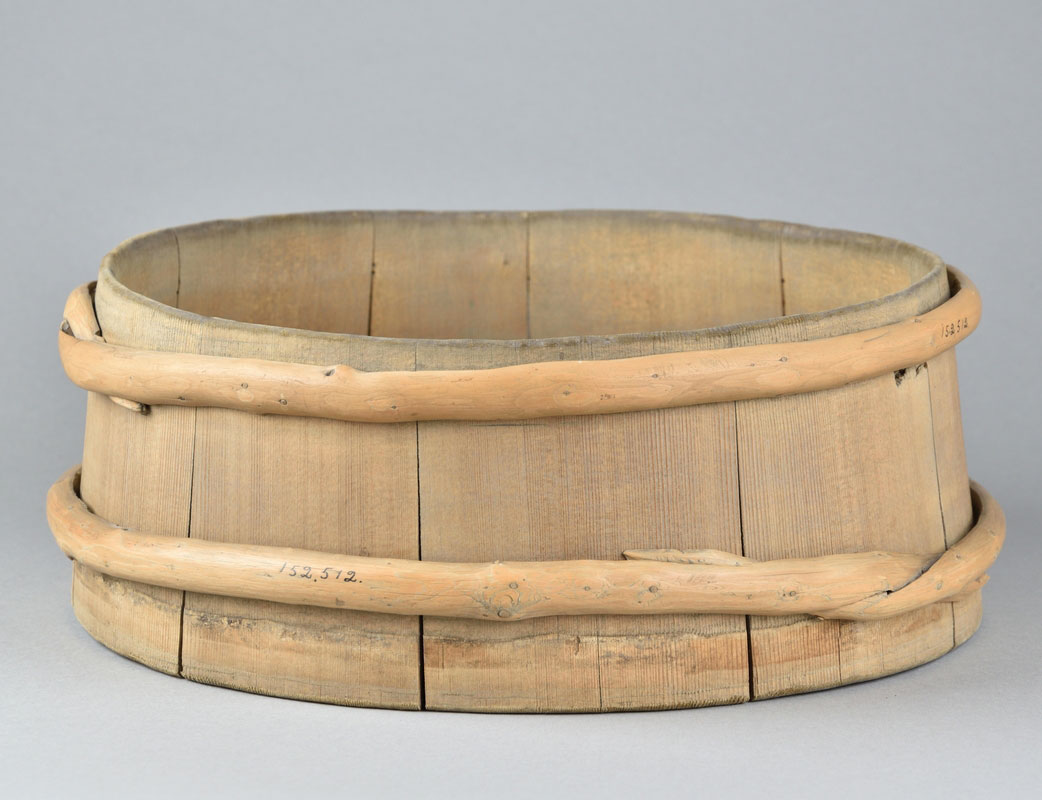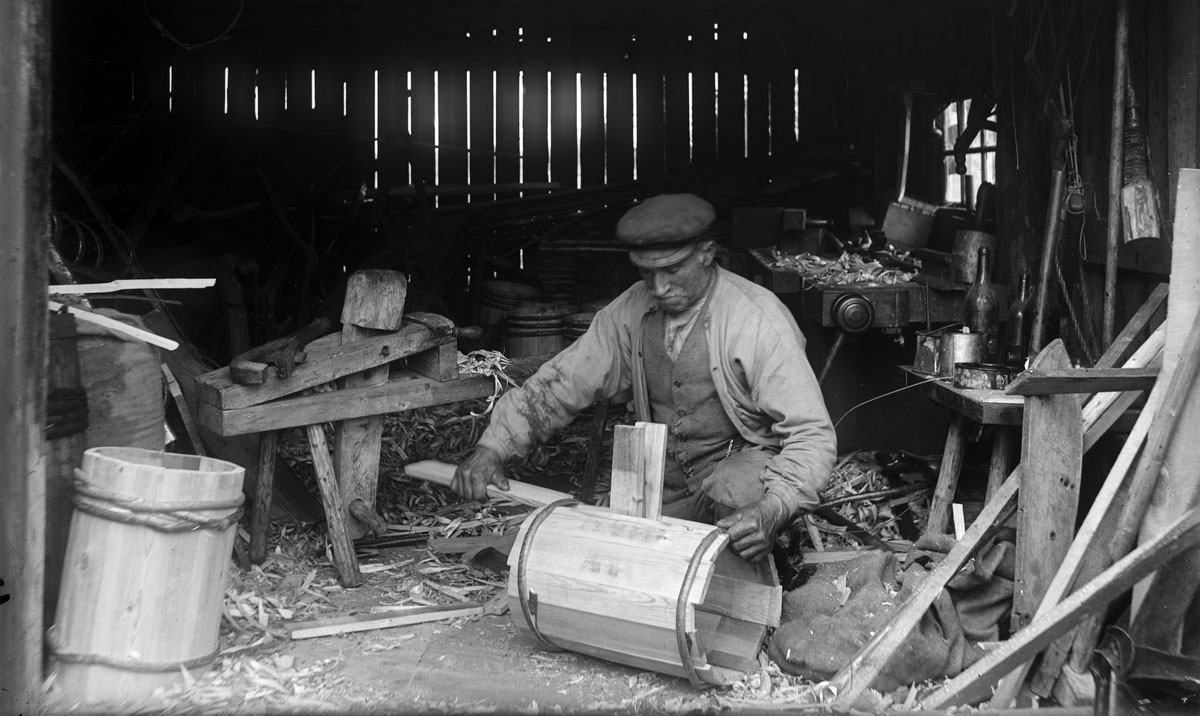- Startpage
- In English
- The Inventory
- Laggning of wooden vessels
Laggning of wooden vessels
Laggning (staving) is an old technique for making wooden vessels. Archaeological findings show that staving was common on the European continent before start of our era. The oldest finds in Scandinavia are dated from around this time.
Location: Nation wide
A laggkärl consists of a number of pieces of wood which together form the side of the vessel, which is round or oval. The term laggkärl comes from the track that runs around the vessel's inside which the bottom of the vessel sits in.
To make a laggkärl, proficient in knowledge of materials (wood), splitting wood, carving, planing and the ability to calculate the vessel's different piece shapes, size and angles on the surfaces of the planks that meet is necessary.
Barrels can be said to be a special form of laggkärl, but they are produced in a different way. The sides of the barrel are built first. They are then held together with provisional metal bands. Then the stave and the bottoms are pushed into the grooves.
Knowledge transfer now occurs primarily through training, practical guidance from tradition bearers to students and through documentaries. There are individual courses through adult education associations and similar associations.


